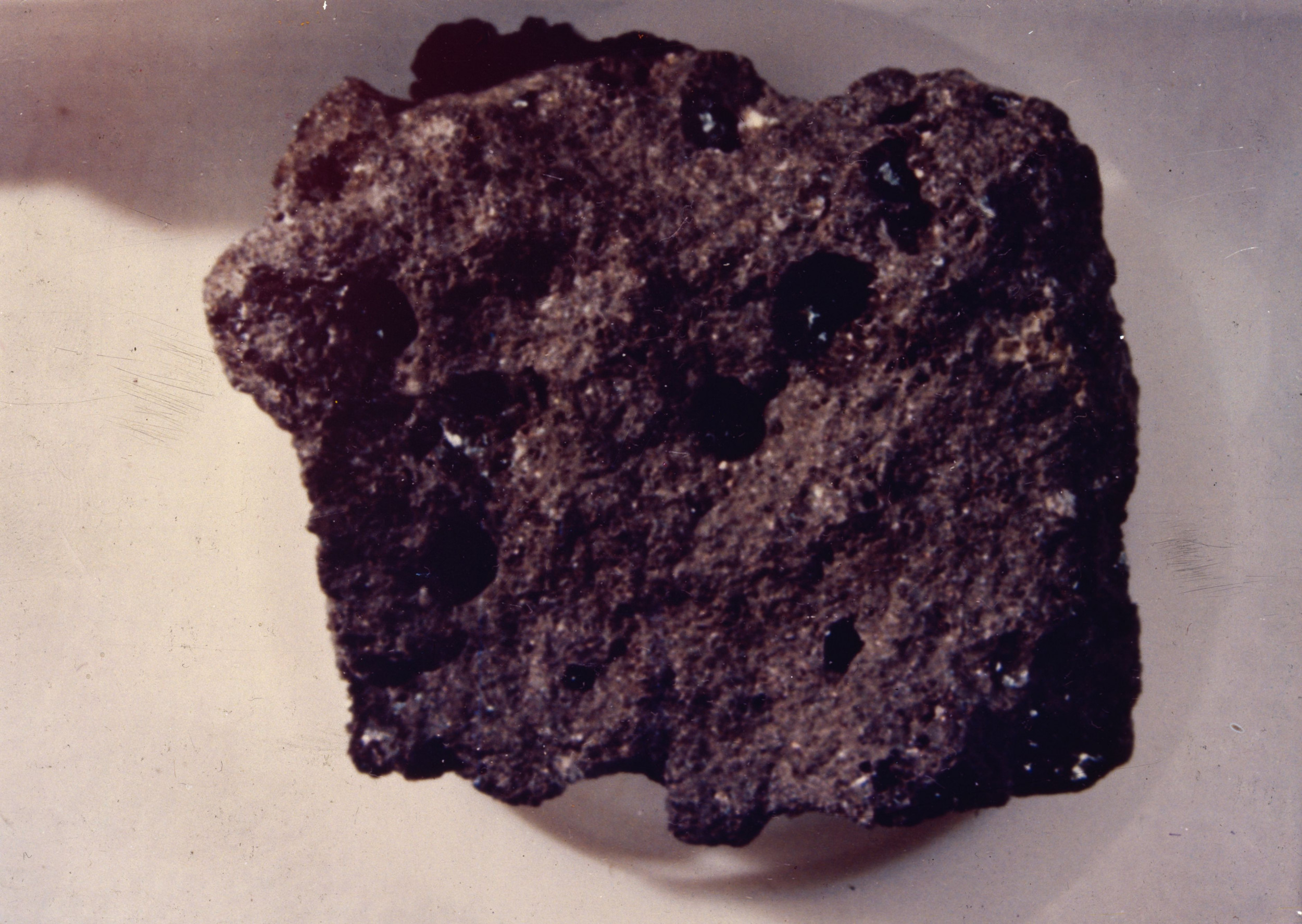Lunar Rocks Disprove Fake Moon Landing Conspiracy, Expert Says - 4 minutes read
 Lunar Rocks Disprove Fake Moon Landing Conspiracy, Expert Says
Lunar Rocks Disprove Fake Moon Landing Conspiracy, Expert SaysOn July 20, 1969, NASA astronauts Neil Armstrong and Buzz Aldrin became the first humans to set foot on our moon. Fast forward fifty years and there is still a sizeable chunk of the U.S. population that believes those landings were faked.
Over the past five decades, many experts have refuted these claims using various explanations. Now a researcher from the Australian National University (ANU) has said that the space rocks the astronauts collected from the lunar surface alone are sufficient to debunk this popular conspiracy.
"Any attempt to make moon rocks in a laboratory would be a monumental failure and likely cost more money than it took NASA to get to the moon and back," Trevor Ireland, from ANU's Research School of Earth Sciences, said in a statement.
"The lunar soil is like nothing we have seen before on Earth. It is the result of eons of bombardment on the surface of the moon. The rocks have compositions that are unique to the moon," he continued.
Furthermore, Ireland suggests that only a human mission could have brought back such a large quantity of rocks to Earth with the technology available at the time.
"There are 380 kilograms [838 pounds] of moon rocks," he said. "Getting this amount of material back to Earth is just as difficult as getting the 21 Apollo astronauts on seven missions to the moon and back to Earth."
"That six of the missions landed on the moon, and brought samples back to Earth, is one of the greatest achievements in history. To this day, we continue to analyze the Apollo lunar rocks and they still have surprises for us," he said.
ANU has played a significant role in the history of the moon landings. A former geochemist at the university, Ross Taylor—now 93 years old—was head of a team that was the first to analyze the moon rocks brought back to Earth by the Apollo 11 astronauts.
NASA hired Taylor because he was a world expert in a technique known as spectrochemical analysis, The Sydney Morning Herald reported.
Taylor and his team worked tirelessly under tight security to investigate the samples, which were contained in special sealed boxes, with the media impatiently waiting to learn about the contents.
"I often worked from 7 a.m. until 3 a.m. the following day to deliver results to daily press conferences, such was the huge level of interest globally in our findings," Taylor said in the statement.
"Any error in the analysis would have ruined my reputation. Only moments before one press conference I realized we had made a big mistake and corrected it—just in the nick of time. It was an exhilarating time to be a scientist," he said.
According to Taylor, the moon samples looked like "charcoal briquettes used for barbecues," he told the Herald.
His team's analysis showed the rocks contained significant quantities of iron, titanium and chromium. Furthermore, the samples cast new light on the moon's geological history, indicating, among other findings, that it had experienced a global melting event in its past.
Source: Newsweek
Powered by NewsAPI.org
Keywords:
Moon rock • Moon landing conspiracy theories • Apollo 11 • NASA • Astronaut • Neil Armstrong • Buzz Aldrin • Human spaceflight • Moon • Fast Forward (TV series) • Research • Australian National University • Australian National University • Space • Astronaut • Geology of the Moon • Moon rock • Money • NASA • To the Moon and Back (song) • Ireland • Scientific method • Earth • Science • Lunar soil • Earth • Moon • Rock (geology) • Moon • Ireland • Human mission to Mars • Technology • Time • Kilogram • Pound (mass) • Moon rock • Materials science • Apollo program • Astronaut • To the Moon and Back (song) • Apollo program • Moon rock • Australian National University • Moon landing • Geochemistry • Stuart Ross Taylor • Moon rock • Apollo 11 • Astronaut • NASA • Earth • Spectroscopy • The Sydney Morning Herald • Daily Press (Virginia) • Iron • Titanium • Chromium • Moon • Geological history of Earth • Earth • Melting • Phenomenon •